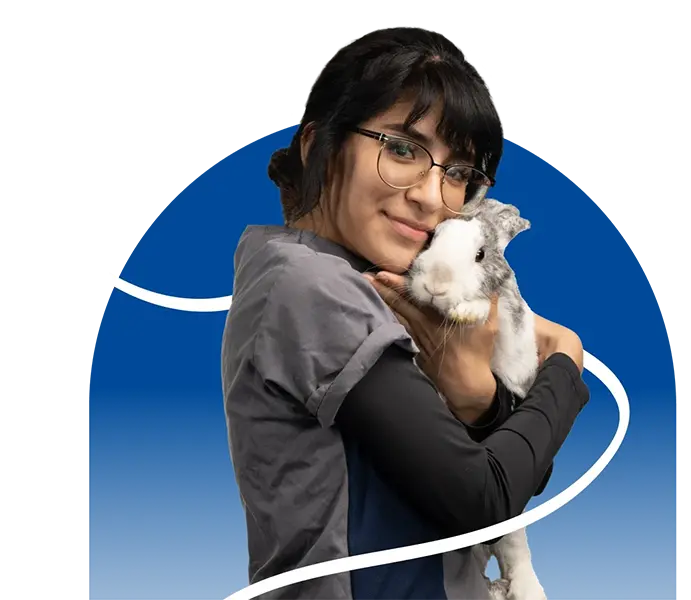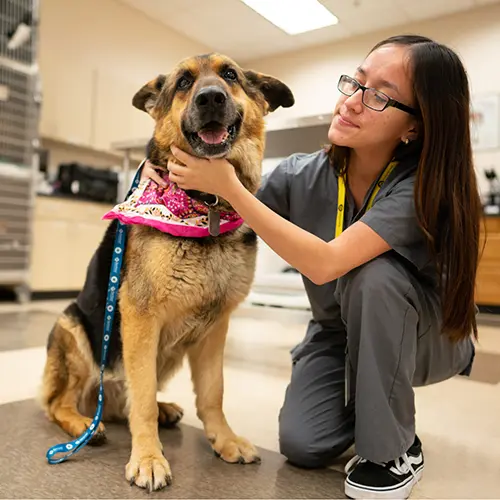Veterinary Assisting


Program Details
Cost & Financial Aid
Education is a major investment, but it’s an investment in your future. Every student comes to Carrington College with unique financial needs. Carrington College is committed to helping you achieve your education goals. We participate in most financial assistance programs, both federal and state, as well as private financing. Each program has different requirements and application instructions. Student loans, grants, and scholarships are available to those who qualify.
Academic Cost
For complete information on current tuition costs, please see page 230 of the Academic Catalog.
The best way for us to understand your financial needs is to meet in person. Call 1-877-206-2106 to make an appointment with our Student Finance Department so we can help you develop your personalized financial plan to achieve your educational goals.
Location Availability
Accreditation & Approvals
Carrington College is accredited by the Accrediting Commission for Community and Junior Colleges, 428 J Street, Suite 400, Sacramento, CA 95814; 415 506 0234 an institutional accrediting body recognized by the Council for Higher Education Accreditation and the U.S. Department of Education. Additional information about accreditation, including the filing of complaints against member institutions, can be found at www.accjc.org/.
For comprehensive information on Carrington’s accreditation and approvals, visit carrington.edu/accreditation.
Course Catalog
Program Specific Disclosures
Continuing Education For Graduates
Student Outcomes
Upon completion of the Veterinary Assisting program, graduates will be able to:
- Complete appropriate veterinary assisting procedures related to animal husbandry, diagnostics, equipment maintenance and client care in a variety of settings.
- Apply basic knowledge of animal anatomy and physiology of multiple species in relation to animal care.
- Maintain a professional and safe work environment.
REAL WORLD SKILLS
FLEXIBLE LEARNING OPTIONS
Request Information
All fields using an asterik (*) are required.
Discover What It’s Like to Train to Become a Veterinary Assistant at Carrington College
Milayna J.
2020 Veterinary Assisting Graduate
Veterinary Assistant Career Opportunities
According to the Bureau of Labor Statistics, increases in consumers’ pet-related spending are expected to drive employment in the veterinary services industry.1 In clinics and other veterinary service establishments, assistants help with various procedures. Demand for veterinary assistants will continue as the demand for these procedures increases.

What Will I Learn?
Veterinary Surgical and Assisting Techniques
Veterinary Hospital Practices
Animal Nursing and Care
Check out our guide on becoming a Veterinary Assistant.
Have you always wanted to work in a veterinary setting, but don’t want to attend school for years? Then a job as a veterinary assistant might be a good career for you. Veterinary assistants work in a variety of roles in veterinary offices and clinical settings supporting the licensed staff with technical tasks.
Veterinary Assisting FAQ
-
How long does it take to be a vet assistant?
Carrington College’s hands-on Veterinary Assisting program can be completed in as few as nine months.
-
What does a vet assistant do?
As stated by the BLS, veterinary assistants and laboratory animal caretakers are responsible for the following tasks:2
- Feeding, bathing, and exercising animals
- Cleaning and disinfecting cages, kennels, and examination and operating rooms
- Restraining animals during examination and laboratory procedures
- Maintaining and sterilizing surgical instruments and equipment
- Monitoring and care for animals after surgery
- Helping provide emergency first aid to sick and injured animals
- Giving medication or immunizations that veterinarians prescribe
- Assisting in collecting blood, urine, and tissue samples
-
What is the difference between a vet tech and a vet assistant?
Veterinary techs are qualified professionals that can perform higher-level clinical tasks to assist in diagnosing or treating animals, according to the American Veterinary Medical Association.2 Vet techs also typically have between two and four years of higher-level education, including an associate or bachelor degree. They must pass a credentialing exam and perform continuing education.
Vet assistants support veterinarians or veterinary technicians in their daily tasks and often perform clerical work. Some of their duties may include performing daily kennel functions, maintaining animals, or spending time on front-end tasks. A main difference between vet techs and vet assistants is that vet assistants complete clerical activities. Additionally, there are veterinary assisting training programs. Some others may learn training on the job, according to the AVMA.